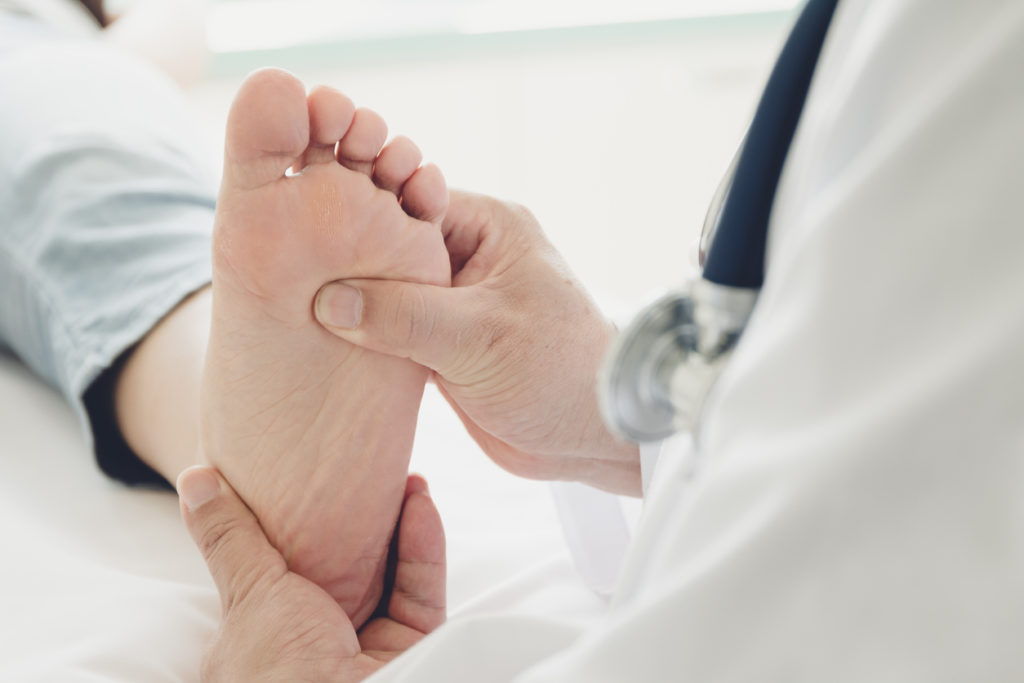Primary Outcomes: Average Intravaginal ejaculatory latency time (IELT), as measured by stopwatch, during sexual intercourse at the end of the treatment period (Week 12) Secondary Outcomes: Control over ejaculation, satisfaction with sexual intercourse, and severity of symptom impressions, based on questions asked at monthly intervals through Week 12; incidence, severity, and type of adverse events throughout study and follow up (Week 14).
Official Title
A Placebo-Controlled, Double-Blind, Randomized, Parallel-Group Study of the Efficacy and Safety of Dapoxetine in the Treatment of Men With Premature Ejaculation
Conditions
Study Type
Interventional
Study Design
Treatment, Randomized, Double-Blind, Placebo Control, Parallel Assignment, Safety/Efficacy Study
Further Details
Premature ejaculation (PE) is a form of male sexual dysfunction. An objective measurement of PE in clinical studies is the intravaginal ejaculatory latency time (IELT). This is a multicenter, placebo-controlled, double-blind, randomized, parallel-group study in men with PE. The study will consist 2 phases: pre-randomization phase (a screening visit and a 4-week baseline period); 12-week double-blind treatment phase during which patients will receive dapoxetine or placebo for use on an "as-needed" basis, with a post-study telephone contact approximately 2 weeks after the end of treatment. The total duration of the study is approximately 18 weeks. Assessments of effectiveness include the average intravaginal ejaculatory latency time (as measured by stopwatch) during sexual intercourse, during the treatment period; control over ejaculation, satisfaction with sexual intercourse, and severity of symptoms, based on questions asked at monthly intervals through the treatment phase. Safety assessments include the incidence, severity, and type of adverse events during the study, as well as laboratory tests and questionnaires to monitor sexual function at specified times during the study. The study hypothesis is that treatment for 12 weeks with dapoxetine prolongs intravaginal ejaculatory latency time, compared with placebo, in men with PE. Oral tablets of dapoxetine (30 milligrams[mg] or 60mg) or placebo taken as needed during 12 weeks of treatment. No more than 1 dose within a 24-hour period.
Study Start
March 2005
Eligibility & Criteria
Ages Eligible for Study: 18 Years and above Genders Eligible for Study: Male Criteria Inclusion Criteria: – Male citizens of Asian countries and Australia are encouraged to enrol in the study – patient is in a stable, monogamous sexual relationship with the same woman for at least 6 months and plans to maintain this relationship for the duration of the study – diagnosis of premature ejaculation (PE) according to the criteria of Diagnostic and Statistical Manual of Mental Disorders (DSM-IV-TR) for at least 6 months before study initiation – history of intravaginal ejaculatory latency time (IELT) of <2 minutes in at least 3 out of 4 events – patient’s partner must have a negative urine pregnancy test at time of screening Exclusion Criteria: – Not taken dapoxetine or participated in another study investigating pharmacologic treatment of PE within the last 3 months – no history of any medical events that are associated with the development of PE – not taken another investigational drug within 1 month, or used an experimental medical device within 6 months of study initiation – no positive diagnosis of depressive or anxiety disorder, manic episode, panic disorder, obsessive-compulsive disorder, posttraumatic stress disorder, alcohol abuse and dependence, schizophrenia, or other psychotic disorders – no known allergy or hypersensitivity to selective serotonin reuptake inhibitors (SSRIs) or serotonin norepinephrine reuptake inhibitors (SNRIs).
Total Enrolment
1110
Contact Details
Australia St. Leonards, 2065, Australia; Recruiting Malvern, 3144, Australia; Recruiting Nedlands, 6009, Australia; Recruiting
All content and media on the HealthEngine Blog is created and published online for informational purposes only. It is not intended to be a substitute for professional medical advice and should not be relied on as health or personal advice. Always seek the guidance of your doctor or other qualified health professional with any questions you may have regarding your health or a medical condition. Never disregard the advice of a medical professional, or delay in seeking it because of something you have read on this Website. If you think you may have a medical emergency, call your doctor, go to the nearest hospital emergency department, or call the emergency services immediately.







